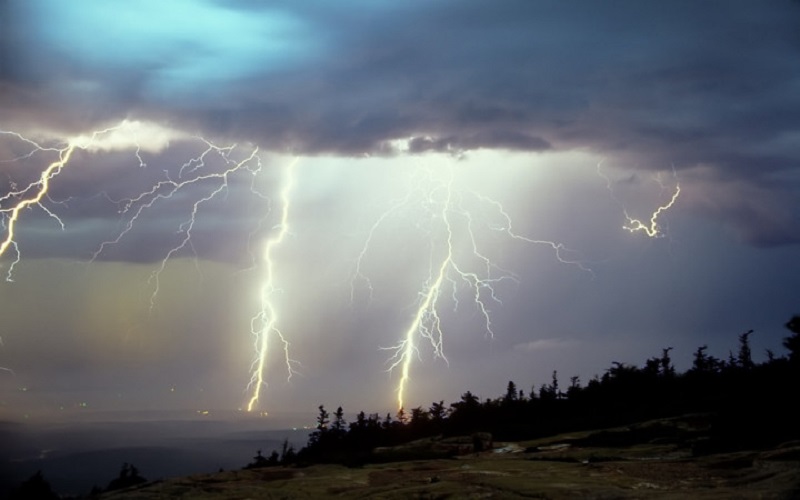The general lockdown that marked the beginning of 2020 was accompanied by a decrease in the number of lightning strikes on a global scale. This phenomenon is believed to be related to the decrease in air pollution at the global level. In any case, this is what a new study is advancing, the results of which were presented at the AGU Fall Meeting 2021 (New Orleans).
The profound economic and social slowdown that accompanied the Covid-19 pandemic in 2020 has had many impacts on the environment, probably the most notable being the drastic decline in air pollution at the global level. This collapse in concentrations of fine particles and certain gases such as nitrogen oxides or ozone had made the headlines of many international media. Now, with hindsight, scientists have identified more unexpected effects.
The trace of the confinement in the lightning observation data
Recently, a group of researchers found out that a decrease in global electrical activity took place at a time when the main countries of the world were confining themselves. Indeed, lightning monitoring networks have shown that between March and May 2020, the global sea level dropped by almost 8%. In addition, by cross-referencing the lightning data with satellite measurements of air pollution, the researchers noticed a clear correlation between the two variables.
The link between electrical activity and aerosols
To understand how these parameters can be related, a little digression is necessary. In the cumulonimbus, the countless shocks between the ice particles organize the separation of the charges essential for the electrification of the cloud. However, in order to form, ice crystals and other sleet require the presence of small dusts on which nucleation will be able to start. Called ice-forming aerosols, they are partly released into the atmosphere by human activities. With less pollution, the air is less loaded with aerosols and the number of ice crystals formed therefore tends to decrease.
However, with fewer ice particles, the charge separation mechanism becomes less efficient. The decrease in the amount of aerosols in the air at the time of containment would thus have decreased the ability of storm clouds to electrify and generate lightning discharges. Finally, it should be noted that previous work has shown that between 2019 and 2020, lightning activity jumped by more than 200% over the Tasman Sea as a result of the circulation of dust from Australian fires. These observations once again confirm the importance of aerosols in the mechanisms of cloud electrification.

Email: mary@satprwire.com Phone: +44 20 4732 1986
Marry is a fitness freak in every manner and gives proper care about her health and of others. She is probably the best person we have at Daily Research News for covering articles from the Health sector. If not at work, she can be seen drinking a cup of coffee.



